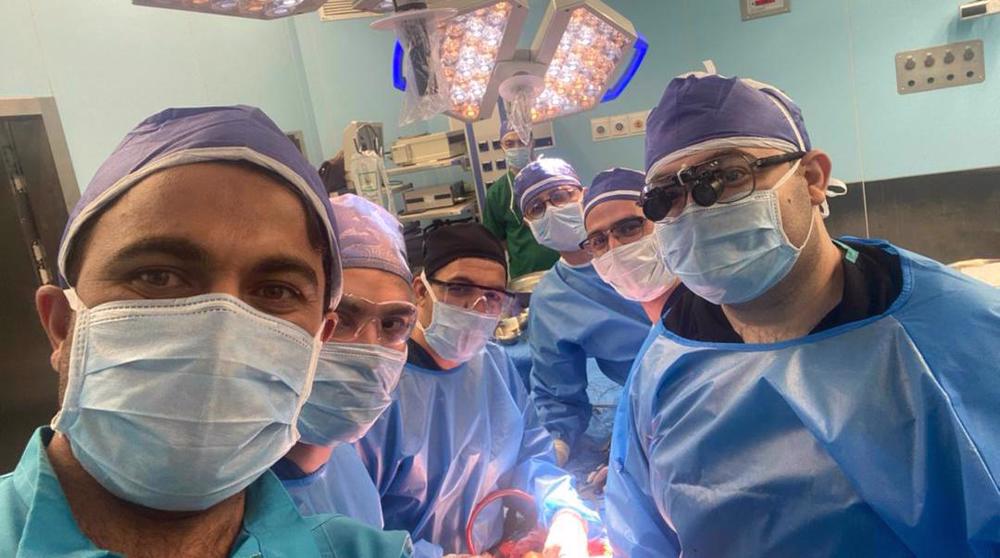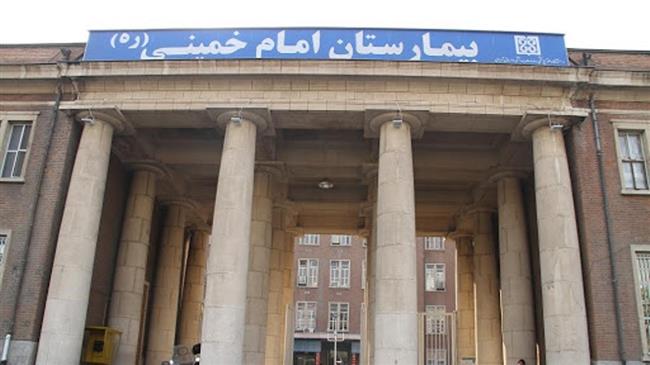How Iranian doctors, in a first, performed organ transplant from dead donor
By Maryam Qarehgozlou
In a first-of-its-kind organ transplant from a dead donor, Iranian surgeons have managed to accomplish an extraordinary feat, saving the lives of several patients, according to a cardiovascular surgeon.
In an exclusive interview with the Press TV Website, Dr. Sam Zeraatian-Nejad Davani said through a novel technique performed for the first time in Iran, organs were donated from a deceased person to living persons.
“The surgical procedure has so far been performed on three donors and all the recipients are healthy,” Dr. Davani, Assistant Professor of Cardiovascular Surgery at Iran University of Medical Sciences, said.
“However, the results of the transplant have not been officially published in any journal yet, [we are waiting] to see how recipients’ bodies respond to it and how the organs function,” he added.
The first transplant after an individual’s death was carried out seven months ago, Dr. Davani informed, adding that the CPR [cardiopulmonary resuscitation] continued for about 60 minutes but eventually proved unsuccessful.
Soon afterward, another patient on the organ transplant waiting list who matched the donor was transferred to the operation theater, the doctor remarked. The second attempt was a success.
“We successfully managed to transplant a kidney from the completely dead donor to a recipient in the first surgery of its kind,” he told the Press TV Website.
Dr. Davani went on to add that the same scenario played out for the second patient, however, this time the donor’s two kidneys and liver were donated to the matching recipients.
In the third patient, the lungs, liver, two kidneys, and pancreas were all donated, he said, noting that the recipients are all doing well and are in very good condition.
“Following correspondence with Donation and Transplantation Institute (DTI Foundation), we were assured that this is the first time such a procedure (in organ transplant) has been performed in the world,” Dr. Davani said.
“We conducted research for a year before implementing this technique to decide if it proves viable.”
Pertinently, DTI brings together medical practitioners from Spain, Europe and America to advise and support the implementation of projects in organ, tissue and cell donation.
Dr. Davani stressed that one of the important factors in implementing the technique is that the team performing it must be on their toes around the clock as they don’t know when a donor may be available.
Organ donation after brain and cardiac death
Organ donation is a life-saving procedure, which according to Dr. Davani is traditionally performed in the world, either after a brain or cardiac death.
Brain death is an irreversible condition when all brain activity ceases and therefore the patient cannot regain consciousness or is able to breathe without critical support.
A person who is brain dead is legally confirmed deceased, so the organs may be viable for transplant.
On the other hand, some may die due to a cardiac stroke, which results from the abrupt loss of heart function, breathing and consciousness.
This condition usually results from a problem with the heart's electrical system, which disrupts the pumping action and stops blood flow to the body. If not treated immediately, it can potentially lead to death.
Donation after cardiac death or non-heart-beating organ donation, which is also referred to as donation after circulatory death (DCD), is the retrieval of organs for the purpose of transplantation from patients whose death is diagnosed and confirmed using cardio-respiratory criteria.
According to Dr. Davani, donation after cardiac death was performed for the first time in the country by his team at Hazrat-e Rasool General Hospital, which is affiliated with the Iran University of Medical Sciences, a premier medical college and hospital.
In donation after cardiac death, doctors perform organ-preserving cardiopulmonary resuscitation (OP-CPR), which is defined as the use of CPR in cases of cardiac arrest to preserve organs for transplantation, rather than to revive the patient, he said.
“After the donor’s heart starts to beat again, the patient is transferred to the operating theater and some drugs to increase the patient’s blood pressure are administered and the process of donating organs, in accordance with health ministry’s guidelines, begins,” said the surgeon.
The technique, Dr. Davani hastened to add, is so far performed in the US, Australia, Spain as well as Iran.
Despite the two aforesaid techniques in donation after complete death, the patient has no blood circulation, heartbeat or lung function, he remarked.
However, there is no difference between the outcome of each of the transplant techniques, the working of the grafts, and the organs' function.
All the organs are retrievable in donation after complete death, and it solely depends on the alacrity and experience of the surgical team to harvest as many organs as possible, Dr. Davani stated.
Tackling growing demand for organs
He said the new technique as well as donation after cardiac death will increase the number of available organs by 20-30 percent for patients on the waiting list whose lives hang on a thread.
“In the post-COVID-19 era and with a drop in the number of brain deaths due to decreased road mishaps, this strategy will increase the number of possible donors for the recipients on the waiting lists. This is a new window and a new era for the future of organ transplantation in our country,” the surgeon said.
Many patients die in hospitals daily, so the cause of death does not usually matter, he said, adding that they just need to be there at the right time and manner and based on protocols and contraindications.
However, the doctor added, it is best to choose patients who die at the hospital and are in the vicinity of an operating theater.
“This way, donors can be transferred to the operation room as soon as their relatives sign the consent forms,” Dr. Davani stressed.
While this technique of donation after complete death has so far been performed at Tehran’s Hazrat-e Rasool General Hospital, Davani said it is possible to use this procedure in all provinces across Iran.
“Surgical teams in other provinces just need to familiarize themselves with the technique as well as learn how to persuade the donors’ families to donate their patients’ organs,” he added.
He said that talks are underway with the Ministry of Health to expand the program to other provinces and hospitals in the capital Tehran.
“We already have the necessary infrastructure and technology in order to perform such a procedure (in other hospitals) at least in the capital.”
Art of persuading families
Generally, it takes between 24 to 48 hours to persuade and convince the relative of the potential donor to sign the consent form for donation, Dr. Davani stressed.
Nonetheless, he said, when a patient dies of a brain injury and is confirmed dead by a team of doctors, their families are given some time to come to terms with the fact that their loved ones are gone.
“But in case of a sudden cardiac death, which is unexpected for the family, the scenario changes completely. It is more challenging and difficult to convince them in such a short span of time,” he added.
“Fortunately, we have coordinators in our teams who are in charge of talking to the patient’s relatives and persuading them according to our guidelines, and so far we did not have any rejections.”
However, the issue may differ from province to province due to cultural differences and local customs, the surgeon noted.
Maryam Qarehgozlou is a Tehran-based journalist who has covered environment, health, technology and Middle East affairs since 2015
VIDEO | People in Malaga hold rally to slam Israeli genocide in Gaza
Progress against famine remains ‘extremely fragile’ in Gaza: WHO chief
IEA data shows increase in Iranian oil production
VIDEO | Israeli regime kills two Palestinians including a child in occupied West Bank
VIDEO | Press TV's news headlines
‘Dying is worth it,’ says UK Palestine Action hunger-striker facing risk of death
Trump set to expand crackdown on immigration despite backlash
Iran reports significant rise in exports to Turkey














 This makes it easy to access the Press TV website
This makes it easy to access the Press TV website